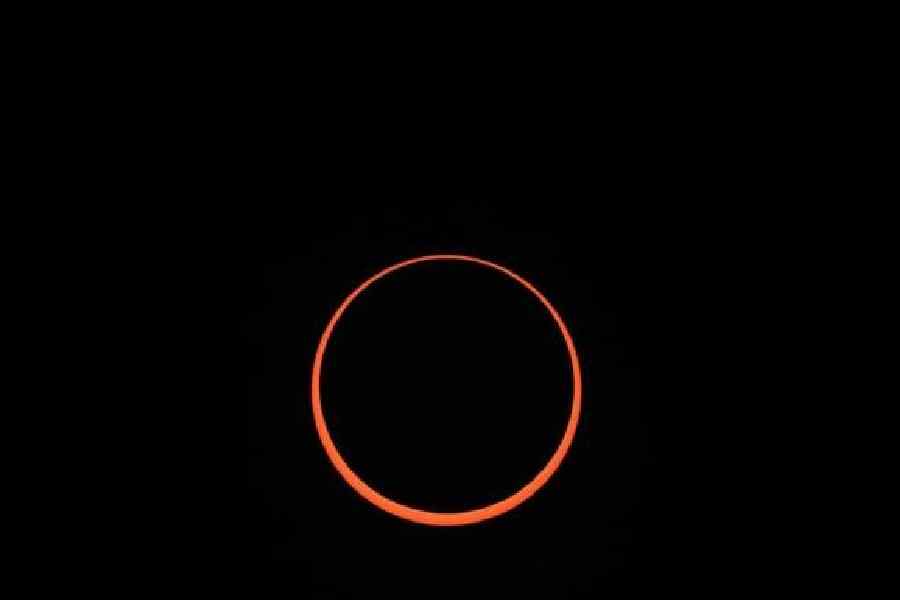A doctor from Calcutta recently clicked pictures of the annual solar eclipse in Albuquerque, New Mexico, in the US.
Arup Ratan Dutta, senior consultant nephrologist at a city hospital, was in New Mexico on the morning of October 14 (local time) where he had the opportunity to watch a spectacular celestial show — the annular solar eclipse.
“Popularly known as the Ring of Fire, annular eclipses occur when the moon comes in between the sun and the earth without completely blocking its view, leaving a thin rim of the solar disc visible all around. This is in contrast to a total solar eclipse where the entire disc of the sun gets blocked by the moon,” said Dutta.
“On October 14, the shadow of the moon swept across the US starting from Oregon on the West Coast passing over Utah, New Mexico, and exited through Texas before going over the central and upper part of South America,” he said.
To watch an eclipse one must be in the path of the moon's shadow and preferably close to the centre line of the shadow band or eclipse path, as it is technically called.
“Weather often plays spoilsport in eclipse viewing. The most detailed planning can go to waste. To maximise our chances of viewing, we chose to go to Albuquerque, New Mexico based on the weather and cloud cover predictions,” said Dutta.
“We were lucky to have ideal weather; a crisp and sunny morning with cloudless sky offered us perfect viewing throughout the duration of the eclipse," he said.
The beginning of the eclipse, known as first contact (C1) between the edges of the sun and the moon was visible around 9.14am (local time). About 80 minutes later at 10.35am (local time), was the second contact (C2) marking the beginning of annularity, which lasted slightly more than four minutes. Then came the third contact (C3), which signifies the end of the annularity and the beginning of the exit of the moon from the solar disc.
Fourth contact (C4) was observed around 12.10pm (local time) when the edges of the sun and moon met for the last time marking the end of the eclipse.
Solar eclipses, total as well as annular, must be watched through solar filters, said the doctor.
"Even during the annular phase, the ring of fire is so bright that it can burn the retina, causing permanent visual impairment. The solar filter cuts the light by 99.9 per cent and makes the sky look black. It also imparts a yellow-orange tone to the sun which can be seen in the photographs," said Dutta.
As the eclipse progresses in the sky, one interesting phenomenon can be simultaneously observed on the ground. The round patterns of sunlight seen under any tree take the shape of the partially eclipsed sun. In effect, each blob of sunlight is an image of the sun caused by a gap in overlapping leaves, acting like a pinhole camera lens. At the moment of annularity, these look like a host of circular rings.
"It is possible to observe the progression of the eclipse without looking directly at the sun," he said.






